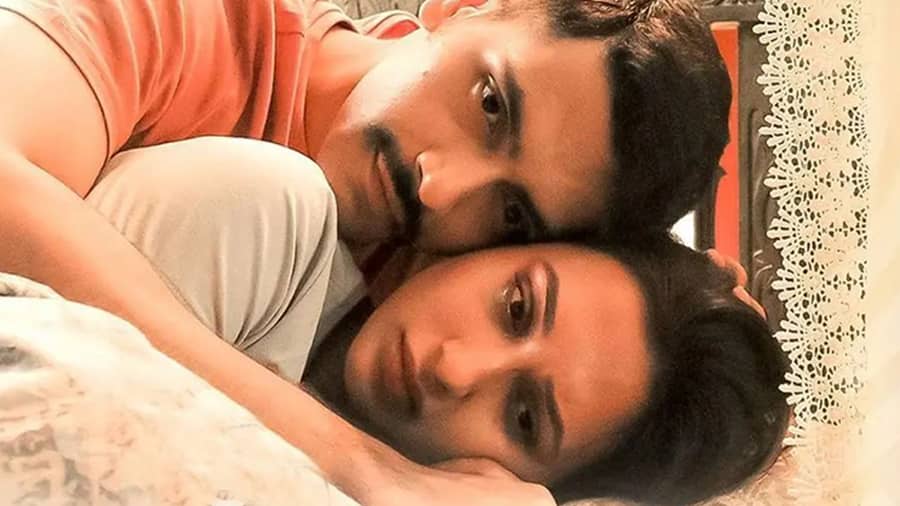Tollywood’s ‘thriller director’ Arindam Sil, who has found much commercial success and critical acclaim with his Shabor and Byomkesh Bakshi films, is ready with Khela Jawkhon, a film that for him is a tribute to Hollywood auteur Quentin Tarantino. In a free-wheeling chat, Arindam traces the backstory of the mystery thriller slated for a December 2 release at the theatres.
The Andhadhun connect
It began with my collaboration with Arijit Biswas (co-writer of Andhadhun). Arijit and I have been friends for some time. I had just watched Three Billboards Outside Ebbing, Missouri. I was so excited that the very next morning I called him up and said, ‘Why can’t we do such things in Bengal?’ That is when we wrote our first collaboration, Sheet Ashchhey (Winter is Coming), which is yet to be filmed. A thriller set in Europe, it is what I call an anti-revenge story.
We used to discuss how thrillers in Bengali cinema are almost always detective stories. Nobody delves into the different sub-genres of the thriller. That is when we decided to make Khela Jawkhon. The story is by Arijit. After reading the initial draft I felt that two characters were missing in the story – a kid and a sister-in-law. The child later became the crux of the story. The best part of Khela Jawkhon is that every time you think that the story revolves around a certain thing, an entirely different strand crops up. Arijit and I feel that as filmmakers, it is also our duty and responsibility to bring various flavours to the audience of Bangla cinema.
The first choice was Sayani, not Mimi
Sayani Gupta did not work out for several reasons. I really look forward to working with her sometime. Then, Taapsee Pannu loved the script. She eventually didn’t want to do it because she said that it was in the same genre as a film that she had done. I won’t name the film because that would be a giveaway. Ultimately, this film was meant for Mimi Chakraborty.
Tribute to Quentin Tarantino
I have been inspired by (Quentin) Tarantino and his films. The first film of his I saw was Pulp Fiction – at the Kolkata International Film Festival. This is my tribute to Tarantino. It has nothing to do with any particular Tarantino film. I don’t want to reveal why I say ‘Tribute to Tarantino’. All I can say is that there is a bloodbath that we normally don’t see in Bengali cinema. Now that Tarantino has announced that he will be making his last film, I thought it was the best time to pay my respects.
The sounds and silences
Bickram Ghosh has done a phenomenal job as far as the music is concerned. We have not done classical stuff; lots of pianos and western instruments. The moment Bickram saw the first cut, he said, ‘The film is different. It’s a challenge I’m going to take up.’ The one thing that he agreed upon was my suggestion that I needed a lot of empty space in Khela Jawkhon. I needed to have ‘silence’, which Bickram instantly agreed to.
Action!
Sunil Rodrigues (Shershaah, Sooryavanshi…) is the action director for Khela Jawkhon; he is quite phenomenal. I designed every action sequence – from a flying car to a stylised fight – then discussed it with Sunil Rodrigues. I wanted to create an exciting cinematic experience for my audience. I love being called a thriller director, which places me in an advantageous position when it comes to experimenting with things that I want to do. I stick to my theory of entertaining, realistic cinema.
Inside-the-mind cinema
This is my third film with (cinematographer) Ayan Sil. Ayan is greatly influenced by Greig Fraser (Dune, Zero Dark Thirty…). We have been experimenting with dark photography in Bangla cinema. Khela Jawkhon is very inside-the-mind cinema. We have tried to highlight the darkness of the mind, its confusions, through lighting. We had already agreed on the colour palette and tonal quality of the film. We have done a lot of experimentation with the way we shot the film. Conventionally, we keep a lot of space in the front, but I’ve kept space at the back. And the character is placed right at the edge of the screen. It’s like messing with the mind.
‘Who am I?’
At the scripting stage itself, I visualised a shot of Mimi cocooned in a foetal position. This is a woman trying to find out who she is. This shot was designed ages back. I placed the camera right over her. Her eyes are closed. She opens her eyes, looks into the camera and says, ‘Who am I?’ It is the crux of the film. It’s a simple film that deals with a complex situation.
The thrill of it
In this part of the country, the audience gets entertained mostly by thrillers. So I said, why not? With Shabor, I wanted to do a film where I could go to the streets of Kolkata… organic Bengali cinema. Through my thrillers I’ve talked about eco-conservation, politics, socio-economic conditions, the cultural aspect, the music scenario. If you see Har Har Byomkesh, I’ve recreated and portrayed the Banarasi Chaiti, Kajri and the kirtan of that time.
When Anjan Dutt worked with me in Byomkesh Gotro, he said, ‘you make better Byomkesh than me’. That was a wonderful statement coming from someone who revived Byomkesh Bakshi on the Bengali screen. He said that I should continue doing Byomkesh. But I don’t want to anymore. Unless I get to do Durgarahashya. That will be my last Byomkesh.











